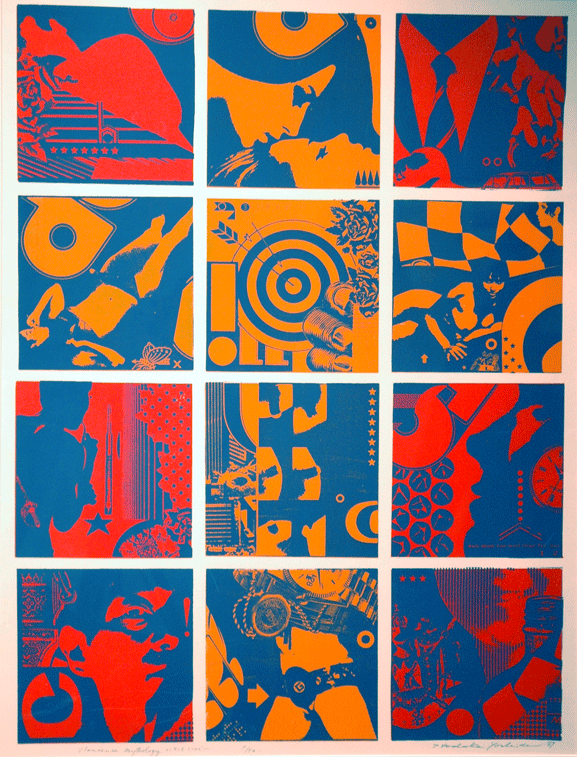Nonsense Mythology, Hodaka Yoshida, photo screen print, 1969
Although Hodaka Yoshida came from a family of artists, he was not encouraged to become an artist himself. However, Hodaka found a double freedom in learning abstract oil painting and in defying his family’s plan for him. Eventually turning to woodblock printing, he would learn to integrate with it multiple media, including photography and magazine cut-outs. He was influenced by Mayan art while in Mexico because of the primitive life power he saw represented. The Japanese gardens of Kyoto also influenced him because of the ever-changing visual perspective relying on the viewer. In 1963 he visited a Pop Art exhibition in New York City and began his own unique interpretation of that. Hodaka then made a series of multimedia prints with a theme of mythology from the years 1966-1978.
Nonsense Mythology explores his ideas on the origin and flow of primitive human culture. He defines mythology as a “mysterious story,” or a sort of fundamental truth. The images reflect this sense of mystery, using themes of alien modern values, shocked emotions, instability, and ominous uncertainty within the Japanese mind at the time. The sexy females and leering, shadowy men suggest the primitive power of human sexuality and the irrational mentality behind it. The title is written in katakana, used in Japanese for foreign words, to connect the images with Western culture. The orange squares form a cross, also denoting foreignness. The divided squares, in Japanese culture, suggest a Buddhist meditative mandala. This is Hodaka’s first screen print and yet it is as if printed by a person expert in this technique.
